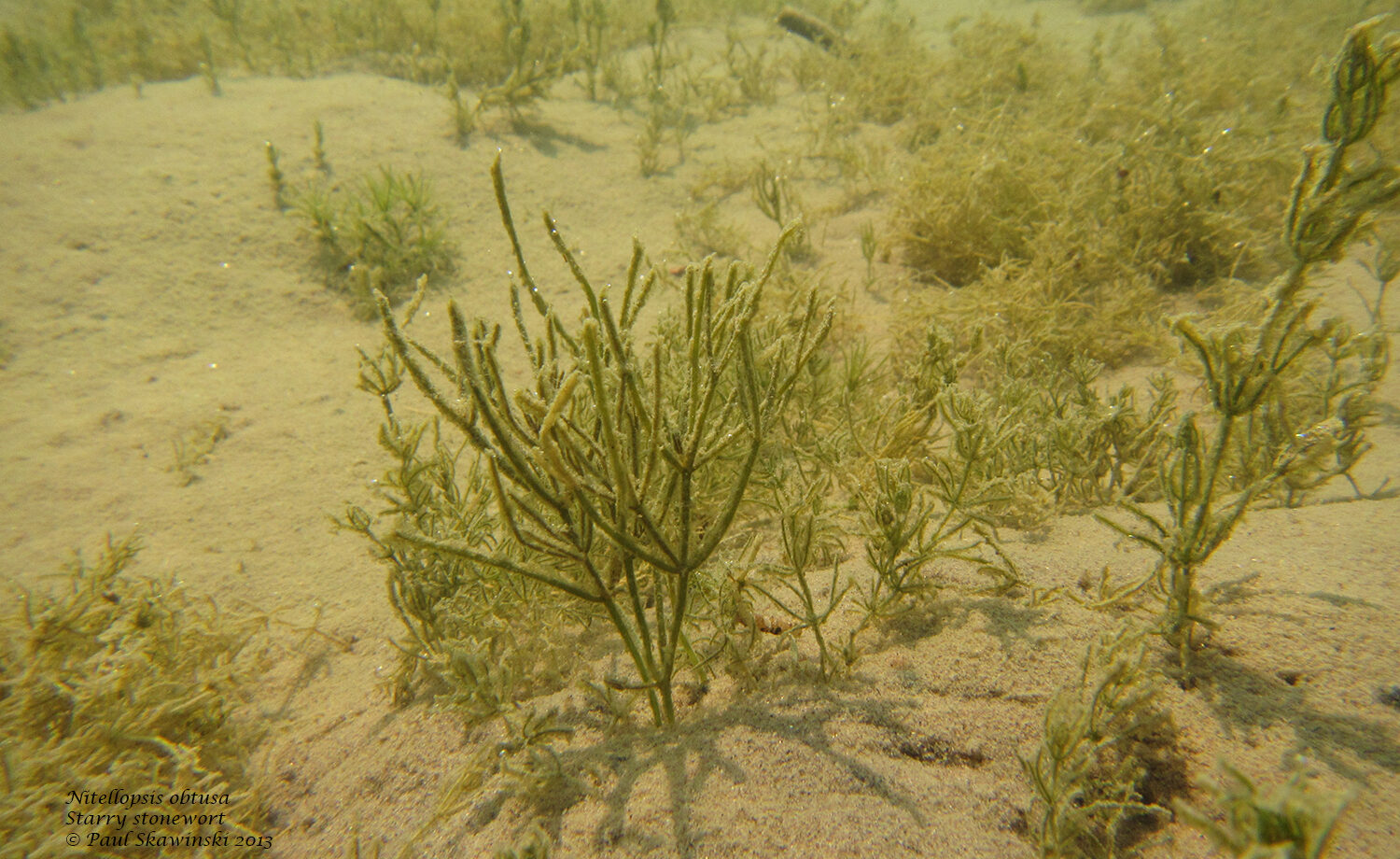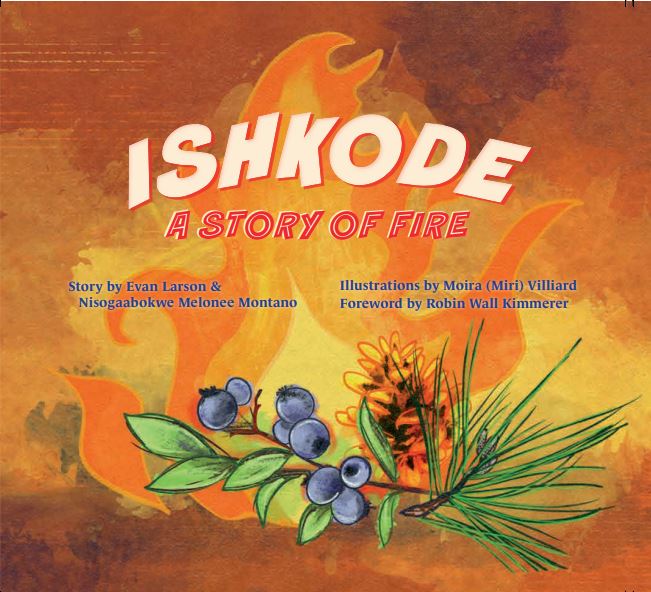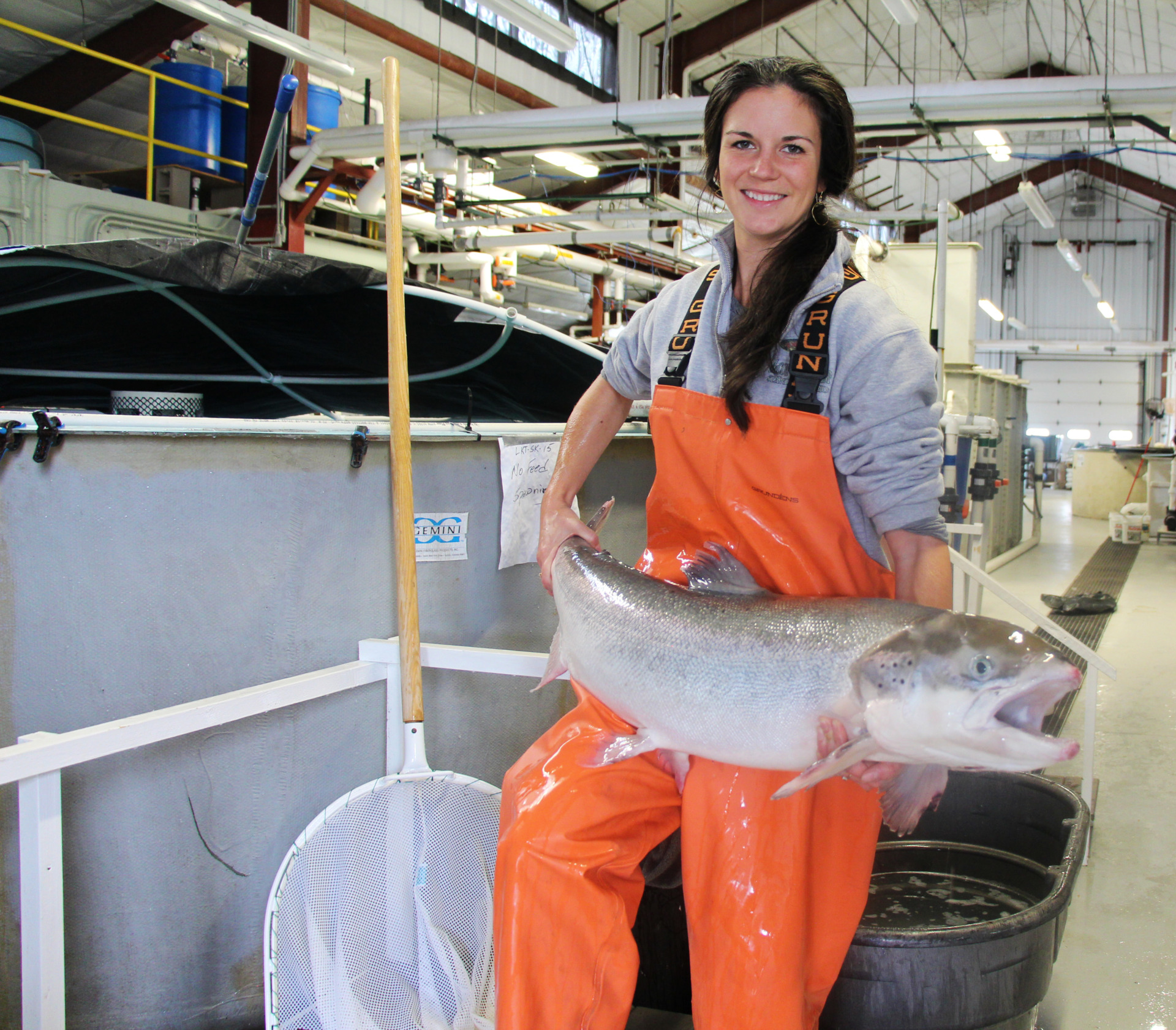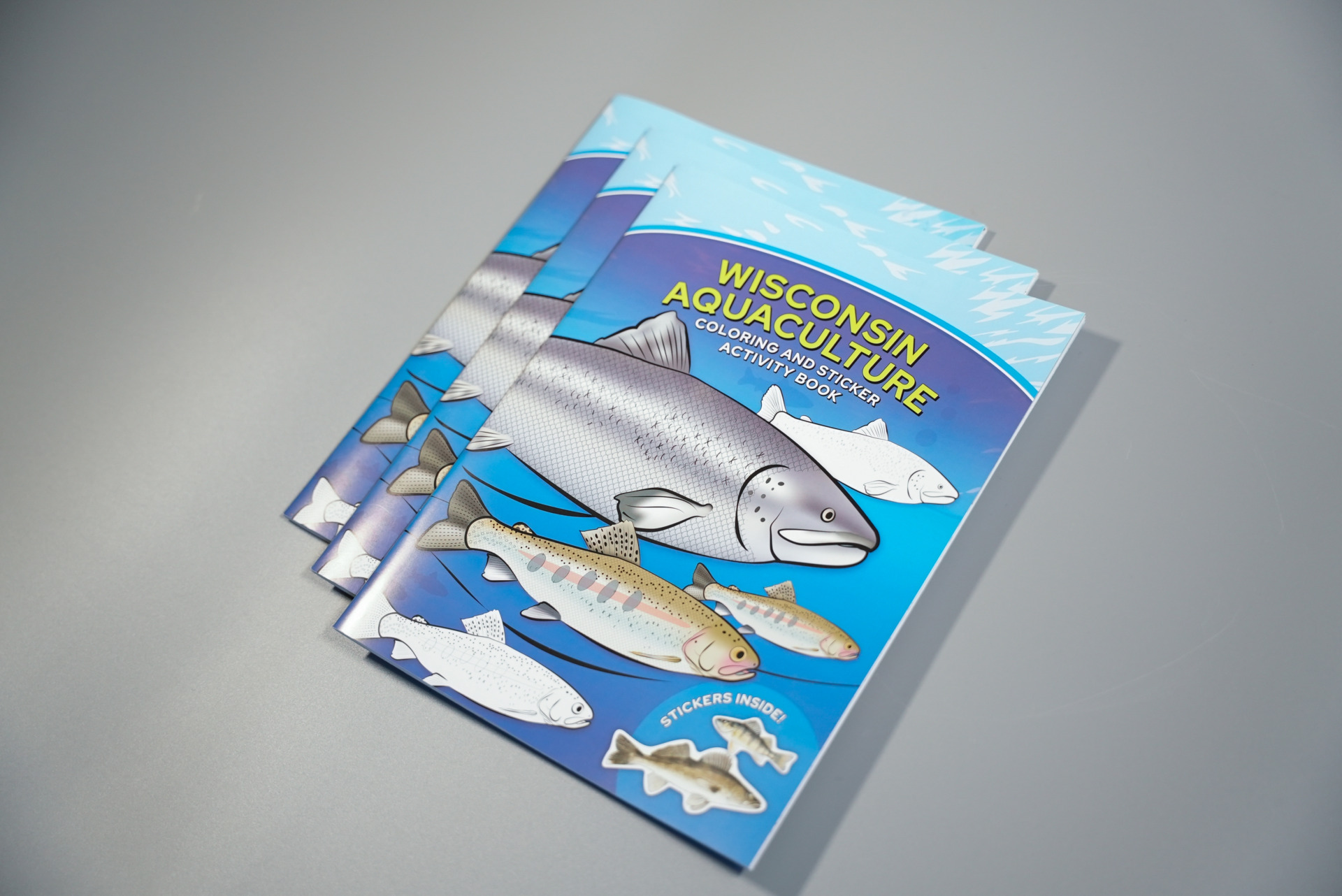
The Wisconsin Aquaculture Coloring and Sticker Activity Book is a first-of-its-kind publication that invites kids to learn about fish farming. Photo: Wisconsin Sea Grant
When Chris Hartleb, director of the University of Wisconsin-Stevens Point Northern Aquaculture Demonstration Facility, was brainstorming ways to get kids excited about locally raised fish, he joked that a scratch-and-sniff sticker book might do the trick.
“Every single employee at NADF said, ‘Do not make that as scratch and sniff.’”
While the fragrance of fish did not make the final cut, the stickers did. The final product, the “Wisconsin Aquaculture Coloring and Sticker Activity Book,” features fish stickers as well as full-page illustrations of different aquaculture systems used to raise fish in Wisconsin.
The Sea Grant-funded book is the first of its kind and is part of a study on how the Great Lakes aquaculture industry could expand through value-added products like fish dips, pre-seasoned fillets and ready-to-eat foods like fish sticks. Hartleb, who co-led the research team, said one goal of the coloring book was to raise awareness of aquaculture products for kids.
“We’re trying to introduce them to the concept of farm-raised fish,” Hartleb said. “Not all fish come from the ocean. A lot of fish are farmed.”
The book illustrates different species raised in Wisconsin, such as walleye, yellow perch, Atlantic salmon, rainbow trout and tilapia, and provides overviews of the aquaculture systems used to raise them. Kids can then take the fish stickers and, in subsequent pages, “stock” them into the aquaculture systems that best suit the fish.
Emma Hauser, aquaculture outreach specialist at NADF and Wisconsin Sea Grant, helped develop content for the book.
“There’s a lot of misconceptions about aquaculture. So, if you are teaching students earlier and earlier on about what aquaculture means in the United States or even more locally, like in their state, they grow up realizing what it is,” she said.
Balancing detail with design
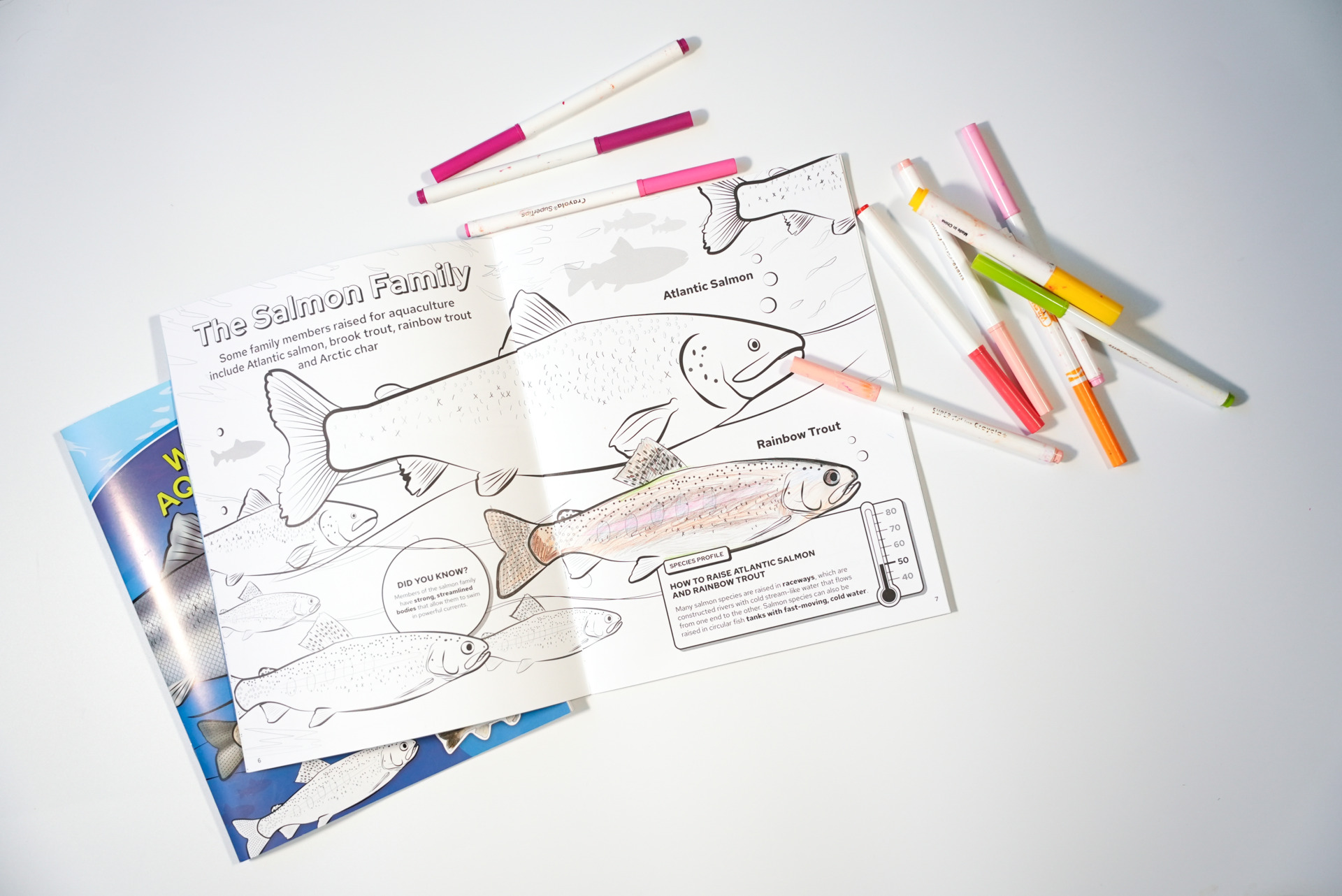
Illustrator Charlotte Easterling’s favorite pages featured fish from the salmon family. Photo: Wisconsin Sea Grant
As an outreach specialist, Hauser often gives tours at NADF and is used to explaining complex systems to different audiences. But developing a coloring and sticking book for kids? That was a new challenge.
“I don’t write children’s books, and it’s really hard to take something that might be very specific and kind of hard to understand and build it in a way that children can understand and relate to,” she said.
Enter Charlotte Easterling, a graphic designer and illustrator and the owner of Creative Vixen Design. She didn’t know much about aquaculture, but NADF staff quickly brought her up to speed with a virtual tour of the facility.
“It was fascinating to learn all the different ways that this is done and seeing the technology,” Easterling said. She worked with Hauser, Creative Manager Sarah Congdon and Editor Elizabeth White to tailor the content for a younger audience. The biggest challenge was getting the technical details right, like the positioning of the equipment or the plants in a pond.
As an artist, Easterling also had an eye toward stylistic consistency throughout the 16-page book.
“Am I being too cartoony with this one compared to the realistic illustration we have of this fish over here? So, trying to just maintain a sense of style throughout that wouldn’t feel like it was done by two different people,” Easterling said.
Her favorite illustration is of the Atlantic salmon and rainbow trout, which are swimming in a circular tank with cold, fast-moving water. “It’s a full-page spread, and it kind of has, like, the sparkly water up above,” she said. “You can feel the movement.”
Reeling in a future workforce
Hauser hopes that the book’s fun illustrations and stickers also invite kids to see fish in their futures — not just on their plates, but as a possible career.
“One of the major bottlenecks to aquaculture expansion is finding an educated and skilled workforce,” said Hauser. “A lot of students that might go into this for a career just don’t really know about it.”
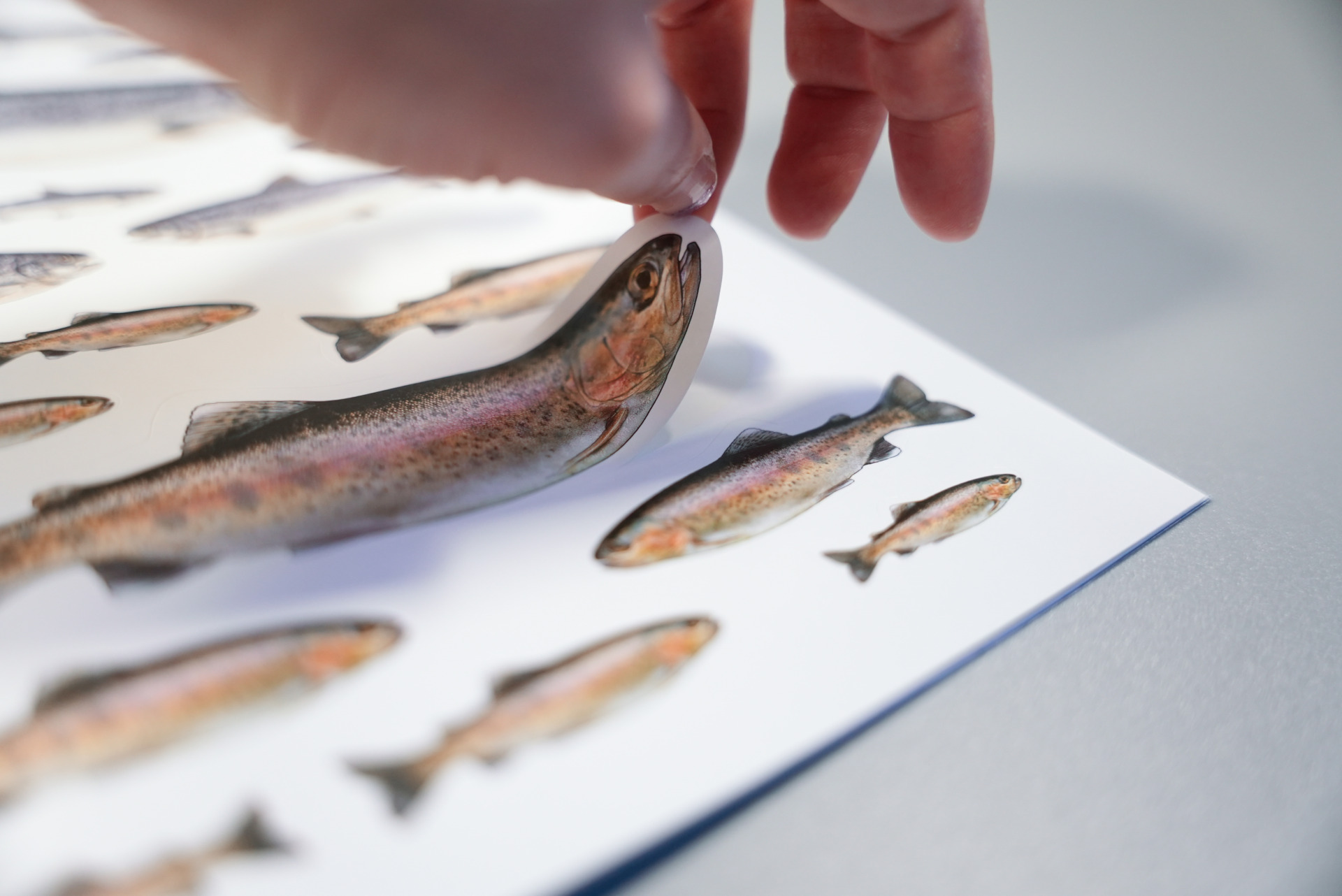
Rainbow trout stickers. Photo: Wisconsin Sea Grant
The book features illustrations of real-life people who work in the industry and touches on the different skills farmers and other aquaculture professionals need. There’s also a map showing the locations of fish farms across Wisconsin, which Hauser hopes will encourage folks to visit nearby farms and learn more about how they raise fish.
“A lot of our farmers are very open to tours and really want to show what they’re doing,” she said.
So far, the book has been a hit. Hauser hands out copies of the book to kids who visit NADF, but as she has learned, it’s best to do so after the tour.
“The kids get very excited about it and want to take the stickers out and start putting them all over,” she said. “We try to get them out of the facility before they start opening them.”
Hartleb has also distributed the books at events, and he’s noticed that it’s not just kids who are interested. Parents have returned to his table to ask for copies for themselves.
“The whole process was a lot of fun, and so far, we’ve gotten great feedback and great response,” he said. “I hope that continues.”
You can order a copy of the Wisconsin Aquaculture Coloring and Sticker Activity book via the Wisconsin Sea Grant publications library.



